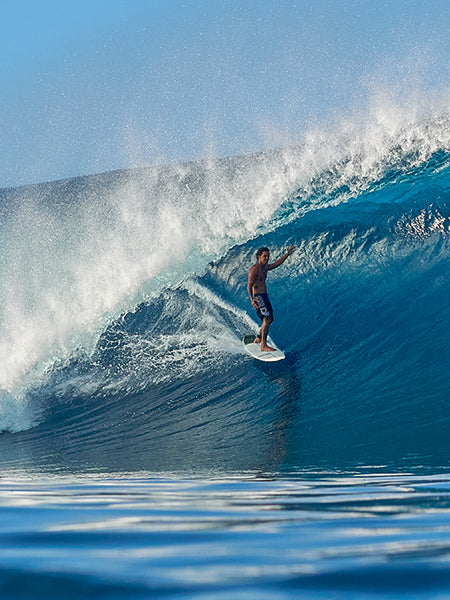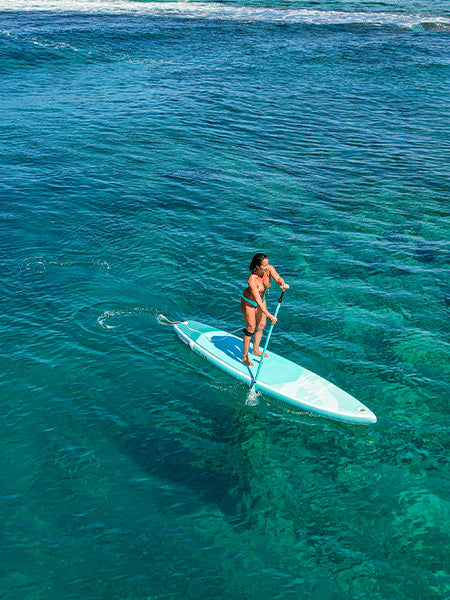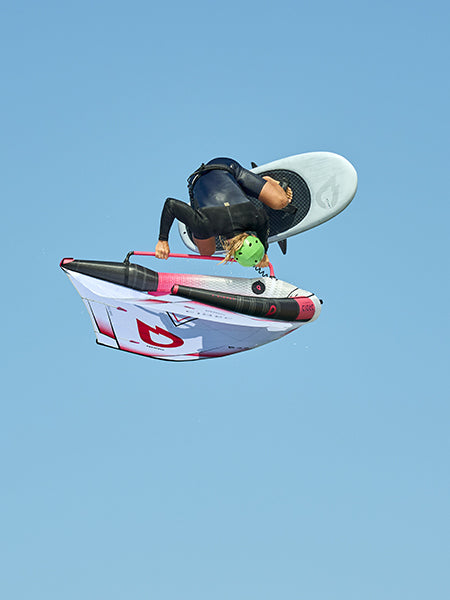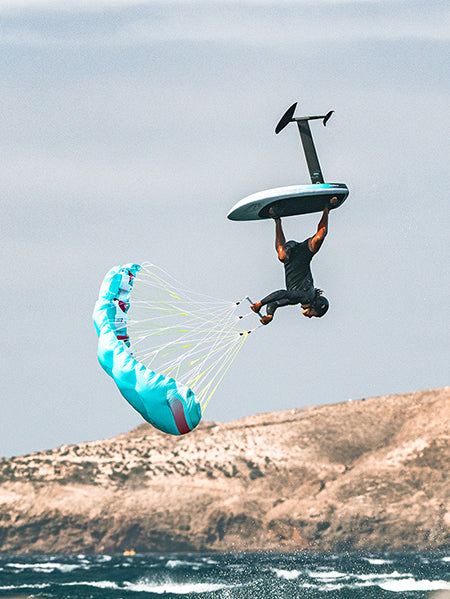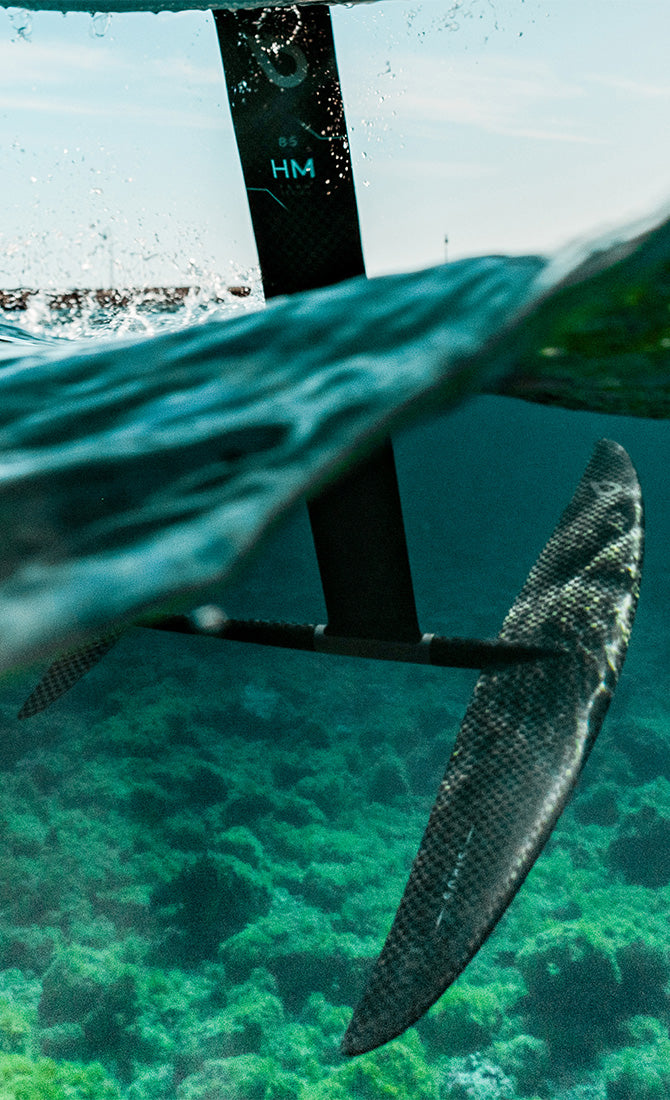Cross the break
Getting through the waves is the most crucial part of your session. The penalty for failure is immediate and cruel and can end your session before it even begins ;). In this ‘How To’ we will see how to safely get through waves and the mistakes to avoid.
First of all, take a good look at the spot. Try to identify the riptides, the currents, the deepest places and those where the wind is blowing best to get going… The perfect spot to launch is one that is as calm as possible with cross-shore winds and sufficient water depth for your foil in order to quickly stand up. Don’t get in the water at all costs. If you don’t feel it or if you see that the waves are overhead with 15 knots onshore and no depth, stay on the beach! On the other hand, if all the lights are green, put on your leashes and give it a try. Here’s the best way to do it:
Launching
First, place your wing downwind (in relation to you) and your board upwind, then the foil even more upwind.
- Hold the wing by the downwind handle, with the flight handles facing down and lift it up a bit to keep a distance with the water surface.
- Take your board by the handle or the base of the mast. Walk until you have water on your thighs.
- Then take the front strap and keep the board on the rail so that the foil does not sink to the bottom, with the nose of the board facing the waves.
This way you will be able to easily lift your gear to get through the waves while leaning on the bottom to jump.
On the other hand, do not flip your board over on its deck with the foil in the air in order to push it by the foil. That’s a bad idea. Even a small wave can sweep the board and send the foil into the wing causing big damages, or worse, hit you in the face with the stab! Leave the foil on the opposite side of you, with the board in between.
Another thing, having the wing in a good position with the extrados facing up makes it fly on its own. This way you can lift it effortlessly. Besides, with the extrados facing the other way it could easily fill with water if caught by a wave. The risk of breakage is increased tenfold if you do not follow this simple advice.
One last thing, if you don’t have foot straps, you can put the board on the rail and hold it by the handle on the hull or by the opposite rail. But we do not recommend it. It’s complicated on the very wide boards which will go up violently under your armpit with each wave.
Move towards the waves
Now that you are in position to face the elements, you can move forward. Lift your gear as each wave or foam passes. Advance little by little until there is enough water depth for your foil. At this point you have two choices: either you are confident and opt for a quick start by getting up without waiting, or you take a little margin by paddling on your board or swimming. This will allow you to take your time beyond the impact zone to get up and leave. If you swim next to your gear, remember that the slightest kick in the foil means stitches in the hospital!
If all goes well, you get through the waves without taking a beating. On the other hand, if you are less fortunate, you take a beating. There are several ways to handle this situation.
- First, you can just give it your all by throwing yourself on the wave while hoping you don’t get beaten too hard. Note that if you have to choose, it is better to save the wing than the board because it’s the most fragile part of your equipment. Keep it as high as possible, above the waves.
- Second, if you are able to get on your board quickly, pretty much standing or even on all fours, you can throw yourself with the wing over the wave in sacrifice board mode. This solution is essential when you are facing a huge wave that will overwhelm you.
- Third, if the situation is insurmountable, drop your board leash and do everything to save the wing, even if it means throwing it in the air before diving under the wave (it works every other time ahaha).
Remember that the real danger is crossing the foil. So it should NEVER be between you and the wave. And you should never let yourself be thrown towards the foil. At the slightest doubt you must drop the board. Buying a foil back will be less painful than 15 stitches !!!
And if you don’t feel comfortable, don’t put the board leash on. Leave without your leash and fix it only when you have got through the waves.
Gear info
The leash of the wing is made to resist in the wind, not in the waves. It’s meant to break if you’re pulled underwater. Otherwise the wing could be crushed by the force of the wave while you’re pulled underwater… Never leave the wing in the water.
Too many people want to save the board, and that’s a big mistake.
